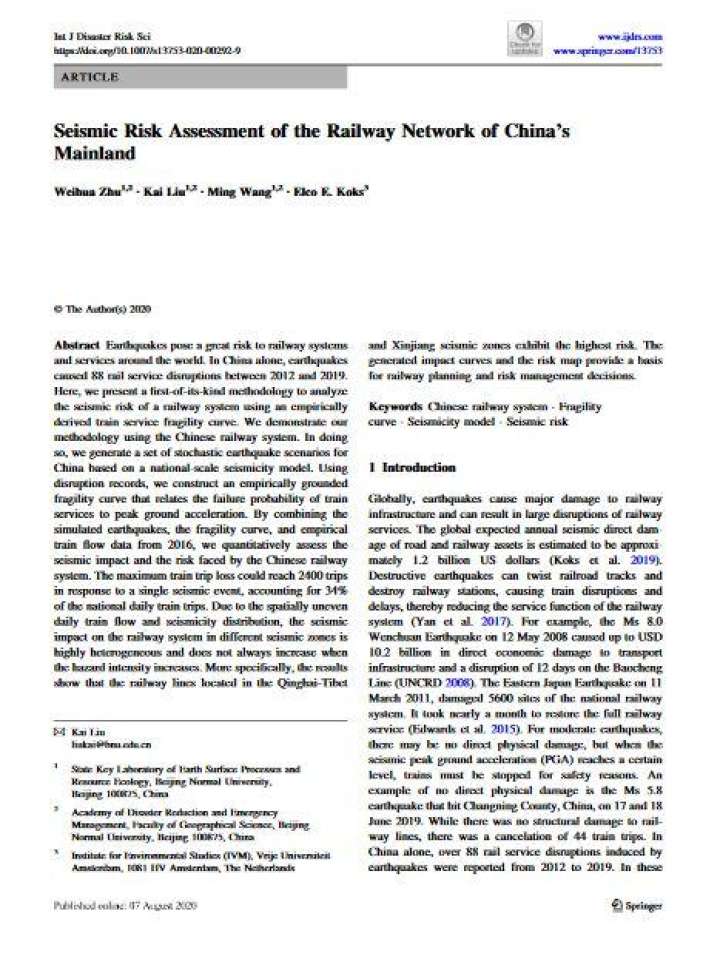Seismic risk assessment of the railway network of China’s mainland
This research presents a first-of-its-kind methodology to analyze the seismic risk of a railway system using an empirically derived train service fragility curve. The authors demonstrate their methodology using the Chinese railway system. By combining simulated earthquakes, the fragility curve, and empirical train flow data from 2016, the authors quantitatively assess the seismic impact and the risk faced by the Chinese railway system.
Due to the spatially uneven daily train flow and seismicity distribution, the seismic impact on the railway system in different seismic zones is highly heterogeneous and does not always increase when the hazard intensity increases. More specifically, the results show that the railway lines located in the Qinghai-Tibet and Xinjiang seismic zones exhibit the highest risk. The generated impact curves and the risk map provide a basis for railway planning and risk management decisions.
Explore further
